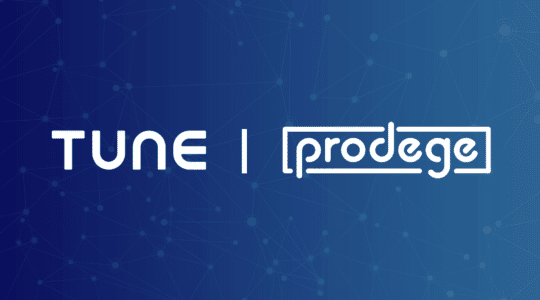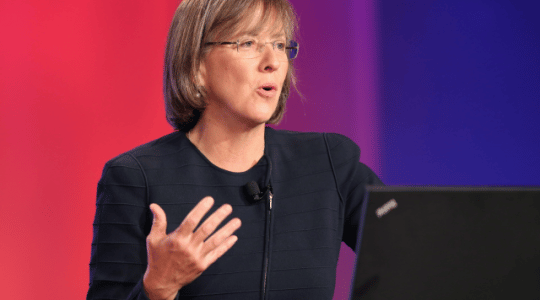
We’ve reached the halfway point of 2018. (Well, a little past it.) At the start of every year, we like to make a few predictions for the martech industry. And this year, we thought it would be fun to see just how accurate our predictions are so far. Here’s the full post of original predictions from TUNE CEO Peter Hamilton, and below are excerpts of his predictions compared to current reality.
1. Prediction: Acquisition and Engagement Unite
In 2018, marketers will take a more holistic approach to balancing new customer acquisition with engagement and as a result improve retention. As they do, they’ll design higher-performance campaigns that are more focused, engaging, and context-relevant.
Reality: So far, so good.
According to a Salesforce survey, lifetime value is the new metric of choice. That means marketers are paying attention to the entire customer journey (engagement) instead of just the beginning of it (acquisition). However, marketers have a ways to go when it comes to implementing. Our recent report with Forrester Research revealed that only 14% of surveyed companies actually track throughout the entire journey. Hopefully that’s what we’ll see fall into place in the rest of 2018.
2. Prediction: Marketing Not Held Accountable Will Dwindle
Companies are already demanding that their marketing teams measure performance in order to demonstrate fiscal accountability, and that trend will fully take root in 2018.
Reality: On track, but maybe not in 2018.
We’re seeing marketers pay more attention to performance, but we’re still not convinced 2018 is the year everyone will convert to die-hard analytics fans. When asked, “What’s in your marketing budget,” 3 out of 4 marketers mentioned marketing analytics, yet marketers currently spend only about 5% of their budgets on it. That number is expected to more than triple by 2021, but we still have a gap to fill until it’s priority number one.
3. Prediction: Mobile Breaks Through in Enterprise
Enterprise companies are diving into mobile, signing up for new tools and software, and preparing to compete with mobile-first companies in 2018.
Reality: Point for us.
There’s no shortage of enterprise companies making their mark on mobile, from major retailers to national coffee chains. In fact, it’s almost unheard of now for an enterprise company to not also have an app or mobile website.
But to be honest, we’d like to see this trend expand even more. And as we mentioned in a recent blog post, there’s still a discrepancy between the time spent on mobile and the budget advertisers are willing to pay for it. Adults spend 5.9 hours on digital media and the majority of that is on mobile, yet advertisers allocate only 26% of their budgets to it.
There’s also a massive opportunity for creativity here that only a few top brands are fully taking advantage of, like image-powered shopping, line-free shopping, AR-powered decisions, and live chat.
4. Prediction: Walled Gardens Begin to Erode
Within the next five years, Google and Facebook will begin sharing data and showing marketers a more complete picture of measurable results. They will do this through siloed, protected analytics environments, measured by third parties capable of ensuring unbiased accuracy.
Reality: It’s going to be a slow erosion.
If the walled gardens are eroding, they’re not doing it without giving their best final stand first. In April, Google said it will no longer let buyers use the DoubleClick ID when leveraging its data transfer service, which makes it more difficult for advertisers to have an independent view of the data generated from ad buys through Google. In addition, in January Facebook caused an uproar with publishers by announcing that it was going to further limit the reach of publishers to distribute content in people’s news feeds.
But in February, Facebook said it would be willing to deliver some of its ad data to a neutral third party. (Called it.) Facebook isn’t willing to do it alone, but this change would help advertisers be more strategic about how they spend their ad budgets, and get a more unified view of which consumers respond to which ads, so we’re remaining hopeful.
5. Streaming Video (OTT) and Voice Technology Show Potential
It’s early for OTT and voice platforms like FireTV, AppleTV, Chromecast, Roku, Amazon Echo and Google Home but they will unlock a broader set of audiences and channels for marketers to test and explore. In 2018, streaming video and voice technology will explode in marketing popularity as more native advertising opportunities are made available.
Reality: It’s still early, but looks promising.
Video is increasing in popularity, with 60% of marketers’ digital advertising budgets being allocated to digital video according to the Digital Content NewFronts: Video Ad Spend Study 2018. We’re seeing the shift even at enterprise level, with companies like Glamour UK downsizing their staff overall, but creating video teams in its place. Partners like Instagram are indicating streaming video is here to stay, recently rolling out IGTV, which allows users to upload videos of up to an hour.
As for voice, the number of devices skyrocketed in 2017, yet we see marketers still grappling with how to measure performance on them. Google has been among the first to lead the charge, recently created Google Shopping Actions, a cost-per-sale ad format for voice search. Overall, more to be seen, but changes are underfoot.
6. Marketers Get a Handle on Fraud and Realize They Need Quality Supply
For technology providers, the focal point will be improving the experience for marketers in dealing with fraud and arbitrating with partners (think more automated actions and identified rules). Marketers will continue to maximize monthly performance with Facebook and Google and will look to increase spend on other channels, from ad networks to exchanges. They’ll be hungry for more native advertising from sources such as Apple Search and Snapchat.
Reality: It’s still a massive and costly issue.
Fraud rose to the forefront in 2017 as every platform seemed to offer their take on a solution. But with all the prominence of the issue, fraud still remains a costly headache — to the tune of $19 billion this year alone. To break it down, research estimates that digital advertisers will waste $51 million on ad fraud every single day in 2018.
Companies like Google and Facebook are stepping up to help address the issue. Google has introduced new technology including page-level enforcements, along with 48 advertiser and publisher policies to their Adwords and Adsense platforms. Google also has thousands of people working to remove bad ads, blocking 3.2 billion of them in 2017 (up from 700 million in 2015). And new Facebook controls aim to regulate its own issues with fraud.
In terms of marketers exercising additional precaution, AdWeek shows 52% of marketers estimate that 10-50% of their marketing spend is lost to fraud, yet only 14% of marketers whitelist sites. Instead, as predicted, marketers are shifting their focus to more native avenues like social media; according to Nielsen study published in June 2018 of U.S. CMOs, an overwhelming 79% described social media as the channel of choice.
Overall, improvements are being made, but there is certainly a long way to go until we are on the downhill ride when it comes to fraud.
Tell us in the comments below — did you have any predictions for 2018? How are they faring? What’s your prediction for the remainder of the year?
Author
Becky is the Senior Content Marketing Manager at TUNE. Before TUNE, she handled content strategy and marketing communications at several tech startups in the Bay Area. Becky received her bachelor's degree in English from Wake Forest University. After a decade in San Francisco and Seattle, she has returned home to Charleston, SC, where you can find her strolling through Hampton Park with her pup and enjoying the simple things in life.




Leave a Reply
You must be logged in to post a comment.